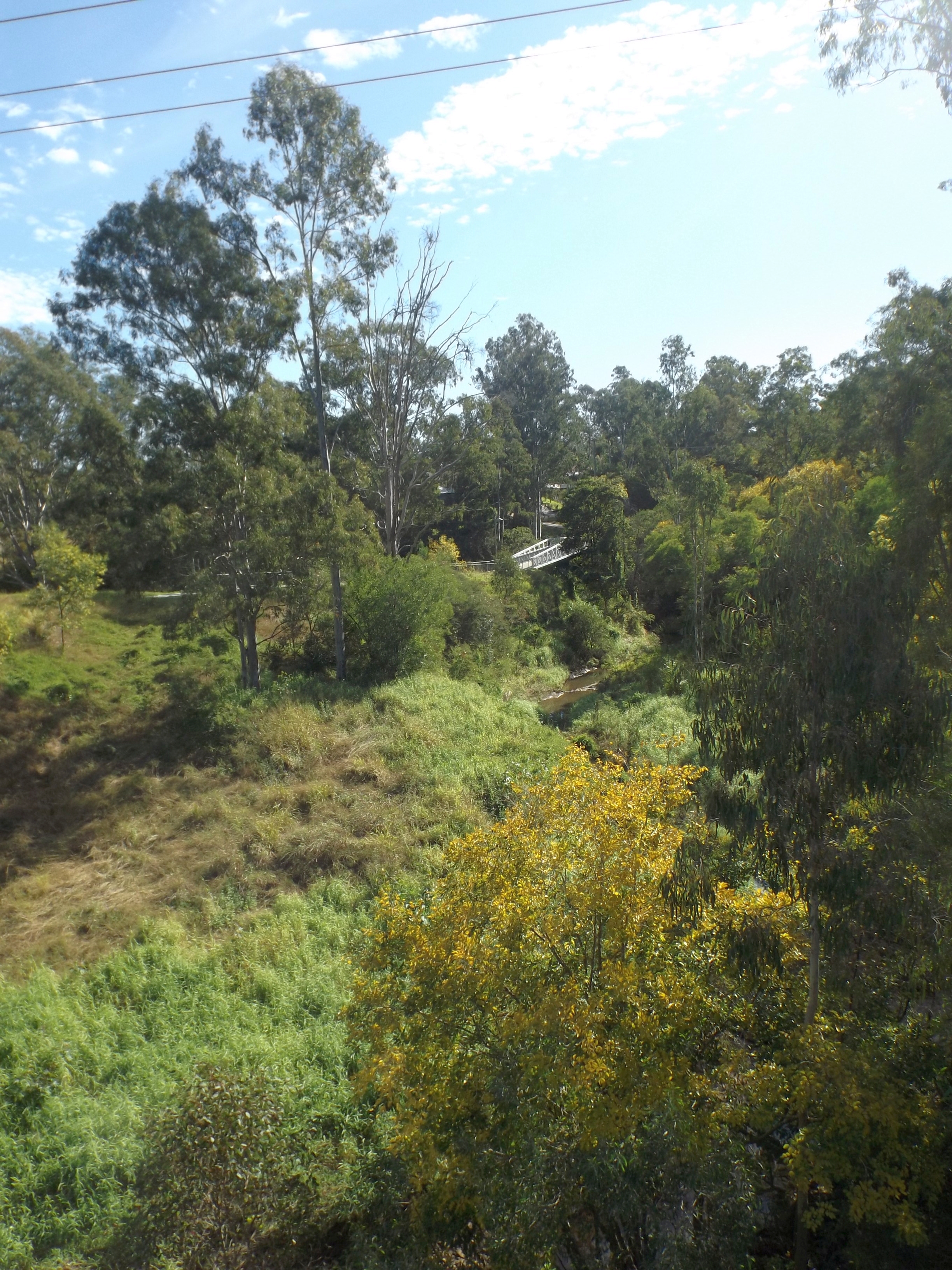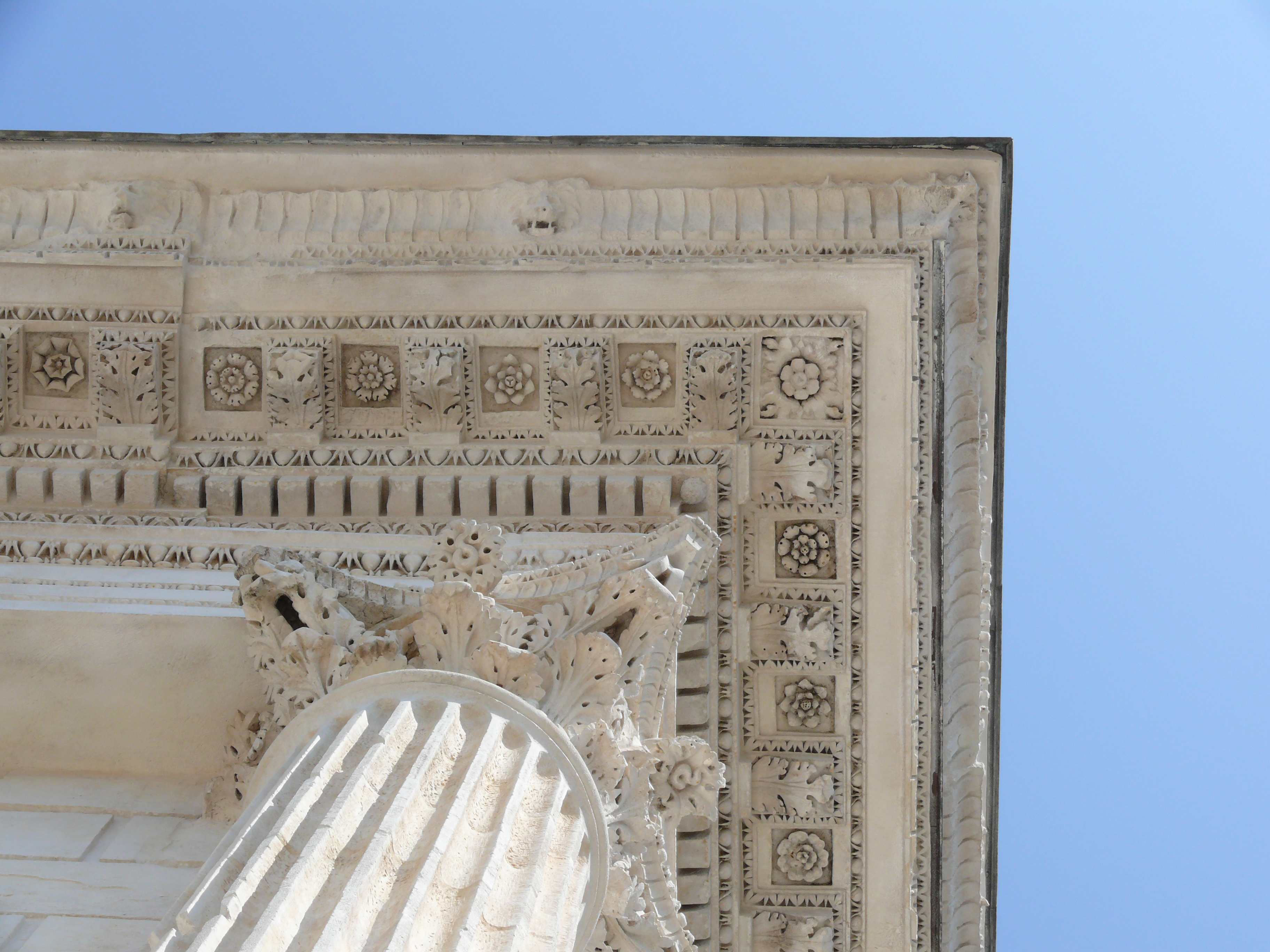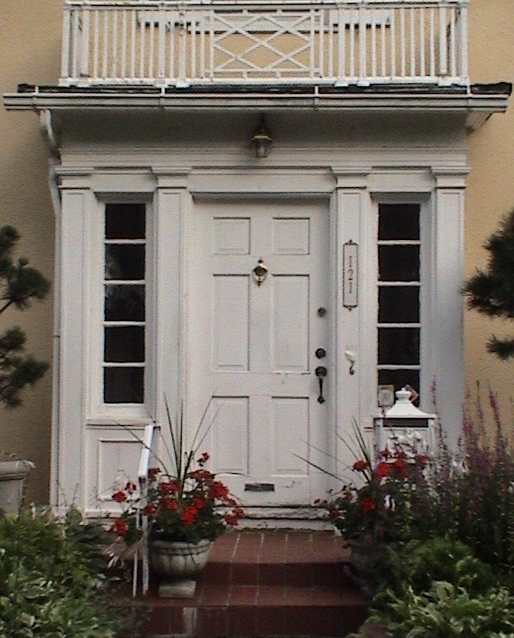|
Hotel Cecil, North Ipswich
Hotel Cecil is a heritage-listed hotel at 15 Lowry Street, North Ipswich, City of Ipswich, Queensland, Australia. It was built from 1887 to 1999. It is also known as Imperial Hotel. It was added to the Queensland Heritage Register on 21 October 1992. The building has traded as the Jets Leagues Club since 1998. History The first hotel to operate on this site was the Unity Hotel which opened in 1880 run by William Frederick Larter. In 1883 James Cooper took over the hotel and in 1887 he changed the name to the Imperial Hotel and an article in the Queensland Times of 19 April 1887 announced that he was trading out of the ''"recently erected and furnished"'' Imperial Hotel, on the corner of Downs and Lowry Streets, North Ipswich. The competition from this new hotel seems to have led to the closure within a year of the Royal Engineer's Hotel on the corner of Downs Street and The Terrace, which had been operating since the mid 1860s. The Queensland Times of April 1888 reported the t ... [...More Info...] [...Related Items...] OR: [Wikipedia] [Google] [Baidu] |
North Ipswich, Queensland
North Ipswich is a Suburbs and localities (Australia), suburb of Ipswich, Queensland, Ipswich in the City of Ipswich, Queensland, Australia. In the , North Ipswich had a population of 4,515 people. Raymonds Hill, Queensland, Raymonds Hill is a neighbourhood within the suburb of North Ipswich. Geography The southern boundary of the suburb follows the Bremer River (Queensland), Bremer River. The Warrego Highway passes from east to west across the northern part of the suburb. Raymonds Hill is near the centre of the suburb (). The hill itself peaks at above sea level (). History The suburb is so named because it is immediately north (across the Bremer River) from the centre of Ipswich. Raymond Hill was named after the hill which in turn was named after early land holders J & R Raymond. North Ipswich is the birthplace of Queensland Rail. The original site is now the site of Riverlink Shopping Centre, Riverlink shopping centre on The Terrace and the current site is used as a ... [...More Info...] [...Related Items...] OR: [Wikipedia] [Google] [Baidu] |
Plinth
A pedestal (from French ''piédestal'', Italian ''piedistallo'' 'foot of a stall') or plinth is a support at the bottom of a statue, vase, column, or certain altars. Smaller pedestals, especially if round in shape, may be called socles. In civil engineering, it is also called ''basement''. The minimum height of the plinth is usually kept as 45 cm (for buildings). It transmits loads from superstructure to the substructure and acts as the retaining wall for the filling inside the plinth or raised floor. In sculpting, the terms base, plinth, and pedestal are defined according to their subtle differences. A base is defined as a large mass that supports the sculpture from below. A plinth is defined as a flat and planar support which separates the sculpture from the environment. A pedestal, on the other hand, is defined as a shaft-like form that raises the sculpture and separates it from the base. An elevated pedestal or plinth that bears a statue, and which is raised from ... [...More Info...] [...Related Items...] OR: [Wikipedia] [Google] [Baidu] |
Cornices
In architecture, a cornice (from the Italian ''cornice'' meaning "ledge") is generally any horizontal decorative moulding that crowns a building or furniture element—for example, the cornice over a door or window, around the top edge of a pedestal, or along the top of an interior wall. A simple cornice may be formed just with a crown, as in crown moulding atop an interior wall or above kitchen cabinets or a bookcase. A projecting cornice on a building has the function of throwing rainwater free of its walls. In residential building practice, this function is handled by projecting gable ends, roof eaves and gutters. However, house eaves may also be called "cornices" if they are finished with decorative moulding. In this sense, while most cornices are also eaves (overhanging the sides of the building), not all eaves are usually considered cornices. Eaves are primarily functional and not necessarily decorative, while cornices have a decorative aspect. A building's projectin ... [...More Info...] [...Related Items...] OR: [Wikipedia] [Google] [Baidu] |
Gable
A gable is the generally triangular portion of a wall between the edges of intersecting roof pitches. The shape of the gable and how it is detailed depends on the structural system used, which reflects climate, material availability, and aesthetic concerns. The term gable wall or gable end more commonly refers to the entire wall, including the gable and the wall below it. Some types of roof do not have a gable (for example hip roofs do not). One common type of roof with gables, the gable roof, is named after its prominent gables. A parapet made of a series of curves (Dutch gable) or horizontal steps (crow-stepped gable) may hide the diagonal lines of the roof. Gable ends of more recent buildings are often treated in the same way as the Classic pediment form. But unlike Classical structures, which operate through trabeation, the gable ends of many buildings are actually bearing-wall structures. Gable style is also used in the design of fabric structures, with varying degree ... [...More Info...] [...Related Items...] OR: [Wikipedia] [Google] [Baidu] |
Pilasters
In classical architecture, a pilaster is an architectural element used to give the appearance of a supporting column and to articulate an extent of wall, with only an ornamental function. It consists of a flat surface raised from the main wall surface, usually treated as though it were a column, with a capital at the top, plinth (base) at the bottom, and the various other column elements. In contrast to a pilaster, an engaged column or buttress can support the structure of a wall and roof above. In human anatomy, a pilaster is a ridge that extends vertically across the femur, which is unique to modern humans. Its structural function is unclear. Definition In discussing Leon Battista Alberti's use of pilasters, which Alberti reintroduced into wall-architecture, Rudolf Wittkower wrote: "The pilaster is the logical transformation of the column for the decoration of a wall. It may be defined as a flattened column which has lost its three-dimensional and tactile value." A pil ... [...More Info...] [...Related Items...] OR: [Wikipedia] [Google] [Baidu] |
Cornice
In architecture, a cornice (from the Italian ''cornice'' meaning "ledge") is generally any horizontal decorative moulding that crowns a building or furniture element—for example, the cornice over a door or window, around the top edge of a pedestal, or along the top of an interior wall. A simple cornice may be formed just with a crown, as in crown moulding atop an interior wall or above kitchen cabinets or a bookcase. A projecting cornice on a building has the function of throwing rainwater free of its walls. In residential building practice, this function is handled by projecting gable ends, roof eaves and gutters. However, house eaves may also be called "cornices" if they are finished with decorative moulding. In this sense, while most cornices are also eaves (overhanging the sides of the building), not all eaves are usually considered cornices. Eaves are primarily functional and not necessarily decorative, while cornices have a decorative aspect. A building's projecti ... [...More Info...] [...Related Items...] OR: [Wikipedia] [Google] [Baidu] |
Balcony
A balcony (from it, balcone, "scaffold") is a platform projecting from the wall of a building, supported by columns or console brackets, and enclosed with a balustrade, usually above the ground floor. Types The traditional Maltese balcony is a wooden closed balcony projecting from a wall. By contrast, a Juliet balcony does not protrude out of the building. It is usually part of an upper floor, with a balustrade only at the front, like a small loggia. A modern Juliet balcony often involves a metal barrier placed in front of a high window that can be opened. In the UK, the technical name for one of these was officially changed in August 2020 to a ''Juliet guarding''. Juliet balconies are named after William Shakespeare's Juliet, who, in traditional stagings of the play ''Romeo and Juliet'', is courted by Romeo while she is on her balcony—though the play itself, as written, makes no mention of a balcony, but only of a window at which Juliet appears. Various types of balcony ha ... [...More Info...] [...Related Items...] OR: [Wikipedia] [Google] [Baidu] |
Bracket (architecture)
A bracket is an architectural element: a structural or decorative member. It can be made of wood, stone, plaster, metal, or other media. It projects from a wall, usually to carry weight and sometimes to "...strengthen an angle". A corbel or console are types of brackets. In mechanical engineering a bracket is any intermediate component for fixing one part to another, usually larger, part. What makes a bracket a bracket is that it is intermediate between the two and fixes the one to the other. Brackets vary widely in shape, but a prototypical bracket is the L-shaped metal piece that attaches a shelf (the smaller component) to a wall (the larger component): its vertical arm is fixed to one (usually large) element, and its horizontal arm protrudes outwards and holds another (usually small) element. This shelf bracket is effectively the same as the architectural bracket: a vertical arm mounted on the wall, and a horizontal arm projecting outwards for another element to be attached o ... [...More Info...] [...Related Items...] OR: [Wikipedia] [Google] [Baidu] |
Sidelights
A sidelight or sidelite in a building is a window, usually with a vertical emphasis, that flanks a door or a larger window. Sidelights are narrow, usually stationary and found immediately adjacent doorways.Barr, Peter.Illustrated Glossary, 19th Century Adrian Architecture, accessed June 17, 2009.The College Hill Historic District ", Community Partnership Center, accessed June 17, 2009. While most commonly found as supporting elements emphasizing the importance of a primary entrance, sidelights may be employed at any interior or exterior door where a visual emphasis is desired, or where additional light or visibility is needed. Design Sidelights are often found in tandem with transom ...[...More Info...] [...Related Items...] OR: [Wikipedia] [Google] [Baidu] |
Architraves
In classical architecture, an architrave (; from it, architrave "chief beam", also called an epistyle; from Greek ἐπίστυλον ''epistylon'' "door frame") is the lintel or beam that rests on the capitals of columns. The term can also apply to all sides, including the vertical members, of a frame with mouldings around a door or window. The word "architrave" has come to be used to refer more generally to a style of mouldings (or other elements) framing a door, window or other rectangular opening, where the horizontal "head" casing extends across the tops of the vertical side casings where the elements join (forming a butt joint, as opposed to a miter joint). Classical architecture In an entablature in classical architecture, it is the lowest part, below the frieze and cornice. The word is derived from the Greek and Latin words ''arche'' and ''trabs'' combined to mean "main beam". The architrave is different in the different Classical orders. In the Tuscan order, i ... [...More Info...] [...Related Items...] OR: [Wikipedia] [Google] [Baidu] |
City Of Ipswich
The City of Ipswich is a local government area in Queensland, Australia, located within the southwest of the Brisbane metropolitan area, including the urban area surrounding the city of Ipswich and surrounding rural areas. Geography The City of Ipswich is centrally located in the South East Queensland region of Australia. Ipswich governs the outer western portion of the Brisbane Metropolitan Area, Queensland, Australia. It covers an area of along the coast about southwest of Brisbane CBD. To the east is the City of Brisbane local government area, and to the west are the rural and agricultural areas of the Brisbane, Lockyer and Fassifern Valleys. History Ipswich is the second-oldest local government area in Queensland, after Brisbane. On 16 November 1859, after the enactment of the Municipalities Act of 1858 in New South Wales, a petition containing 91 signatures was received by the Governor of New South Wales seeking to have Ipswich, which at the time had 3,000 peopl ... [...More Info...] [...Related Items...] OR: [Wikipedia] [Google] [Baidu] |
Ashlar
Ashlar () is finely dressed (cut, worked) stone, either an individual stone that has been worked until squared, or a structure built from such stones. Ashlar is the finest stone masonry unit, generally rectangular cuboid, mentioned by Vitruvius as opus isodomum, or less frequently trapezoidal. Precisely cut "on all faces adjacent to those of other stones", ashlar is capable of very thin joints between blocks, and the visible face of the stone may be quarry-faced or feature a variety of treatments: tooled, smoothly polished or rendered with another material for decorative effect. One such decorative treatment consists of small grooves achieved by the application of a metal comb. Generally used only on softer stone ashlar, this decoration is known as "mason's drag". Ashlar is in contrast to rubble masonry, which employs irregularly shaped stones, sometimes minimally worked or selected for similar size, or both. Ashlar is related but distinct from other stone masonry that is ... [...More Info...] [...Related Items...] OR: [Wikipedia] [Google] [Baidu] |

.jpg)







